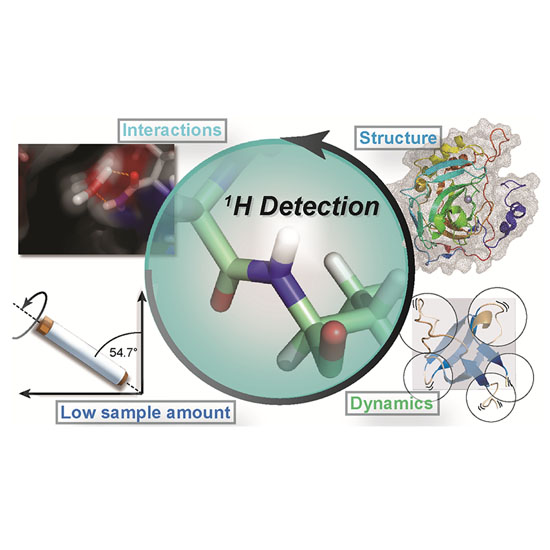Protons as Versatile Reporters in Solid-State NMR Spectroscopy
15-May-2018
Acc. Chem. Res., 2018, 51 (6), pp 1386–1395, DOI: 10.1021/acs.accounts.8b00055
Acc. Chem. Res., online article
Solid-state nuclear magnetic resonance (ssNMR) is a spectroscopic technique that is used for characterization of molecular properties in the solid phase at atomic resolution. In particular, using the approach of magic-angle spinning (MAS), ssNMR has seen widespread applications for topics ranging from material sciences to catalysis, metabolomics, and structural biology, where both isotropic and anisotropic parameters can be exploited for a detailed assessment of molecular properties. High-resolution detection of protons long represented the holy grail of the field. With its high natural abundance and high gyromagnetic ratio, 1H has naturally been the most important nucleus type for the solution counterpart of NMR spectroscopy. In the solid state, similar benefits are obtained over detection of heteronuclei, however, a rocky road led to its success as their high gyromagnetic ratio has also been associated with various detrimental effects. Two exciting approaches have been developed in recent years that enable proton detection: After partial deuteration of the sample to reduce the proton spin density, the exploitation of protons could begin. Also, faster MAS, nowadays using tiny rotors with frequencies up to 130 kHz, has relieved the need for expensive deuteration. Apart from the sheer gain in sensitivity from choosing protons as the detection nucleus, the proton chemical shift and several other useful aspects of protons have revolutionized the field.











